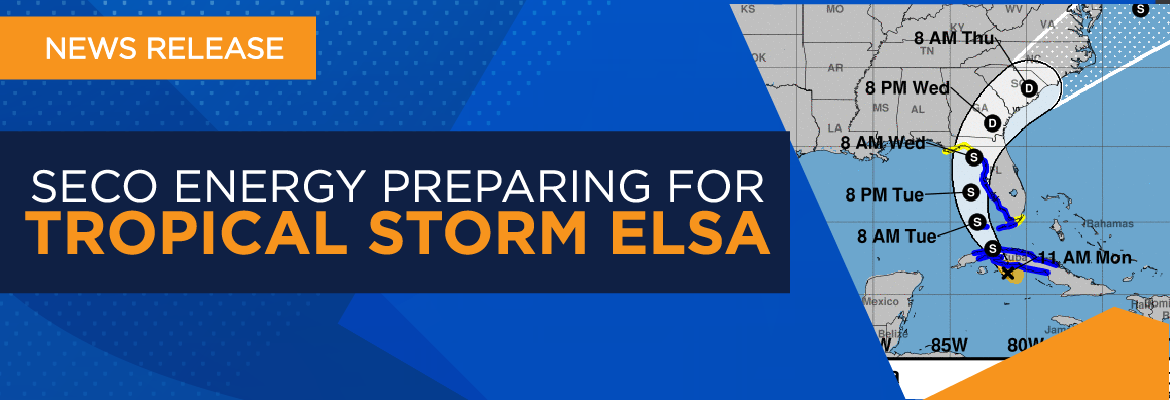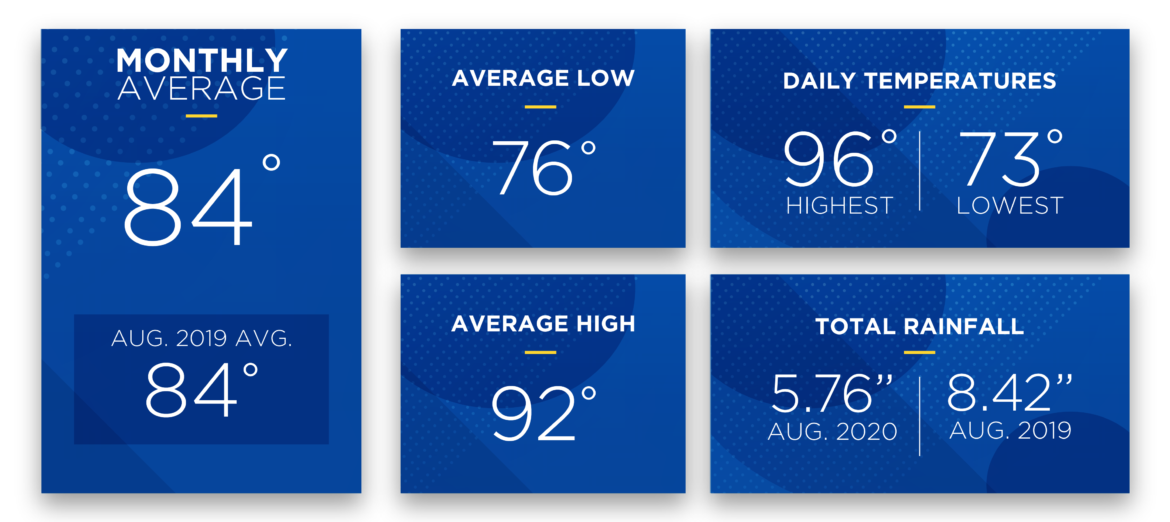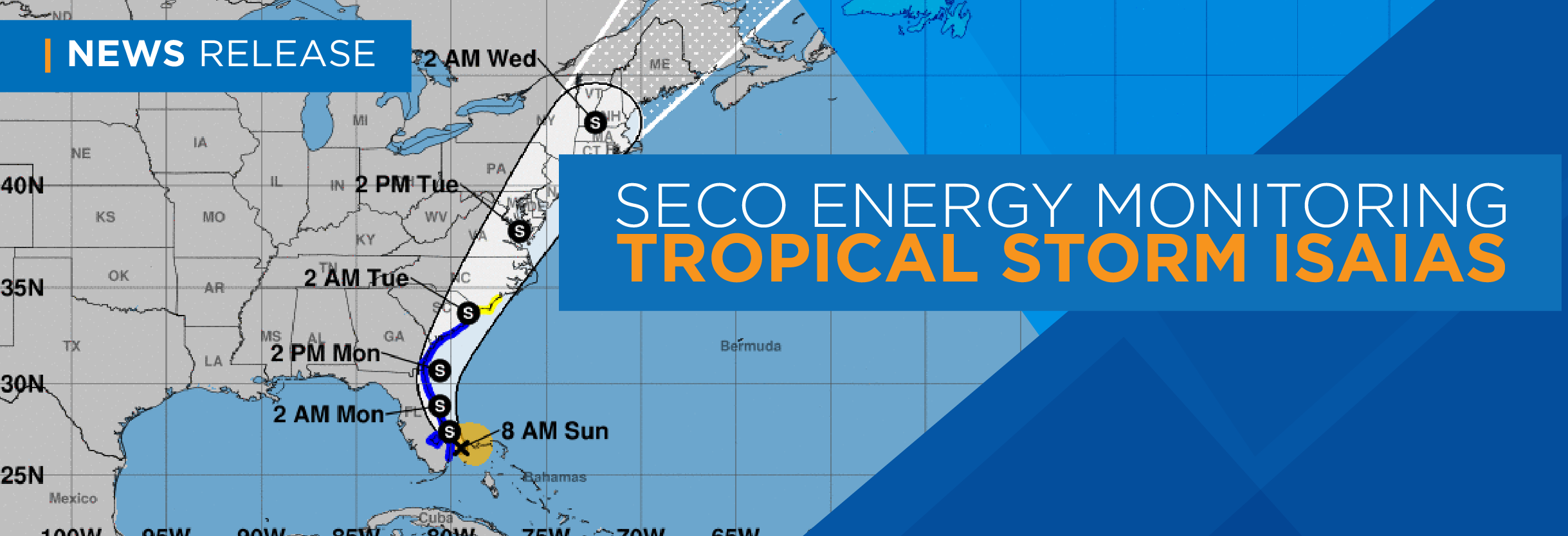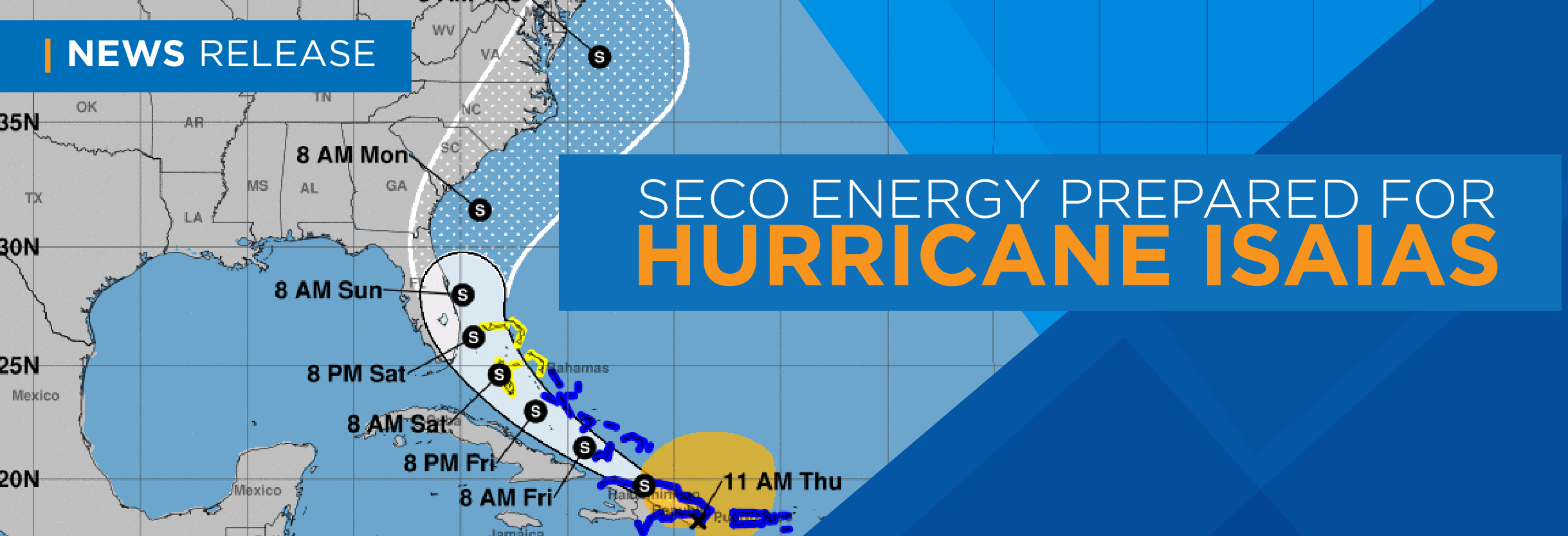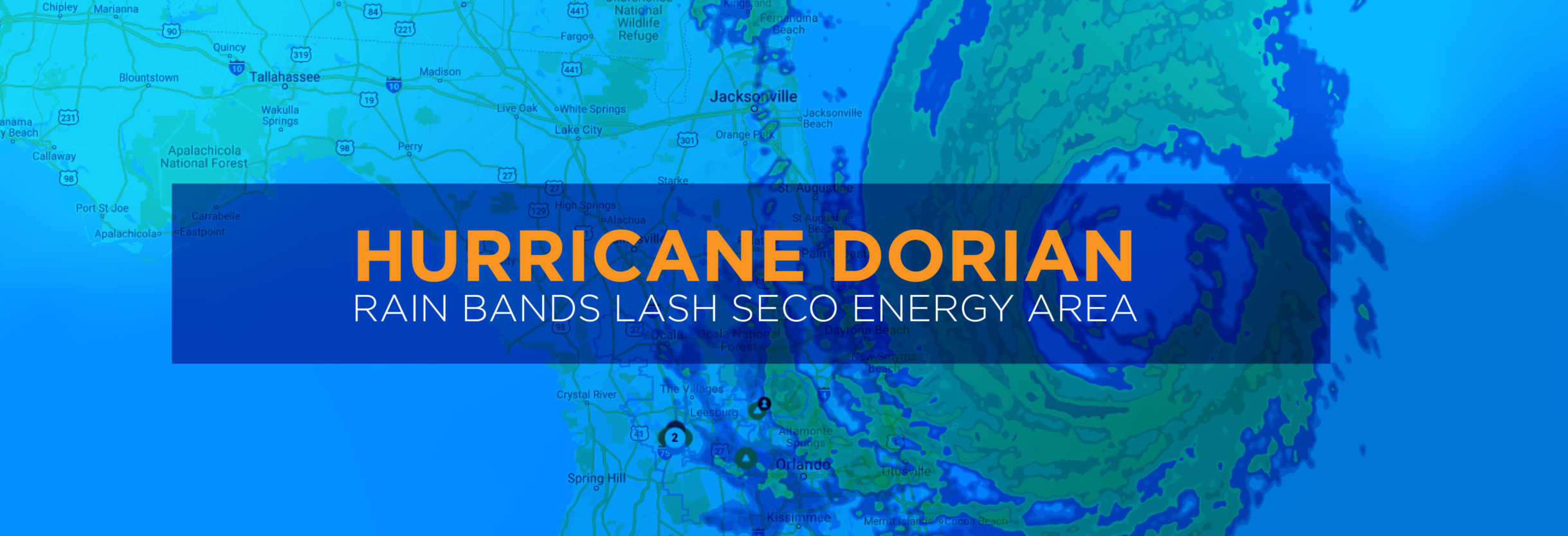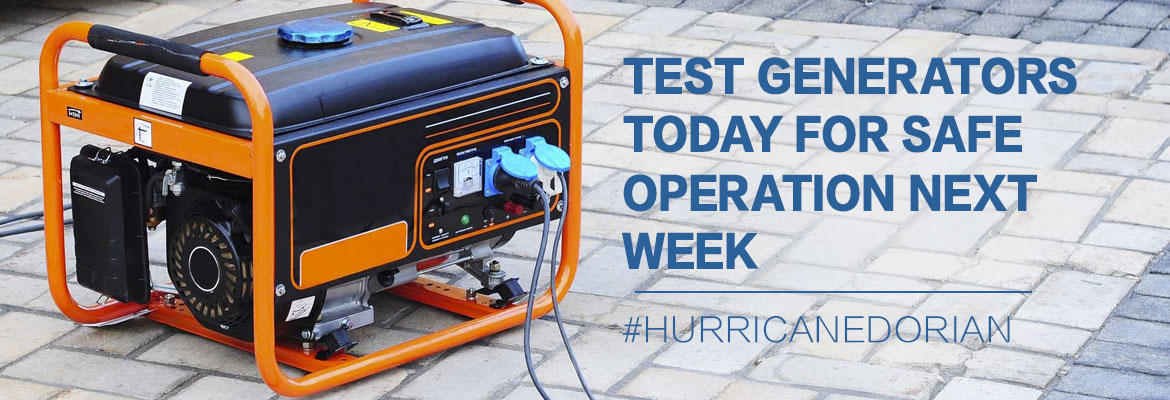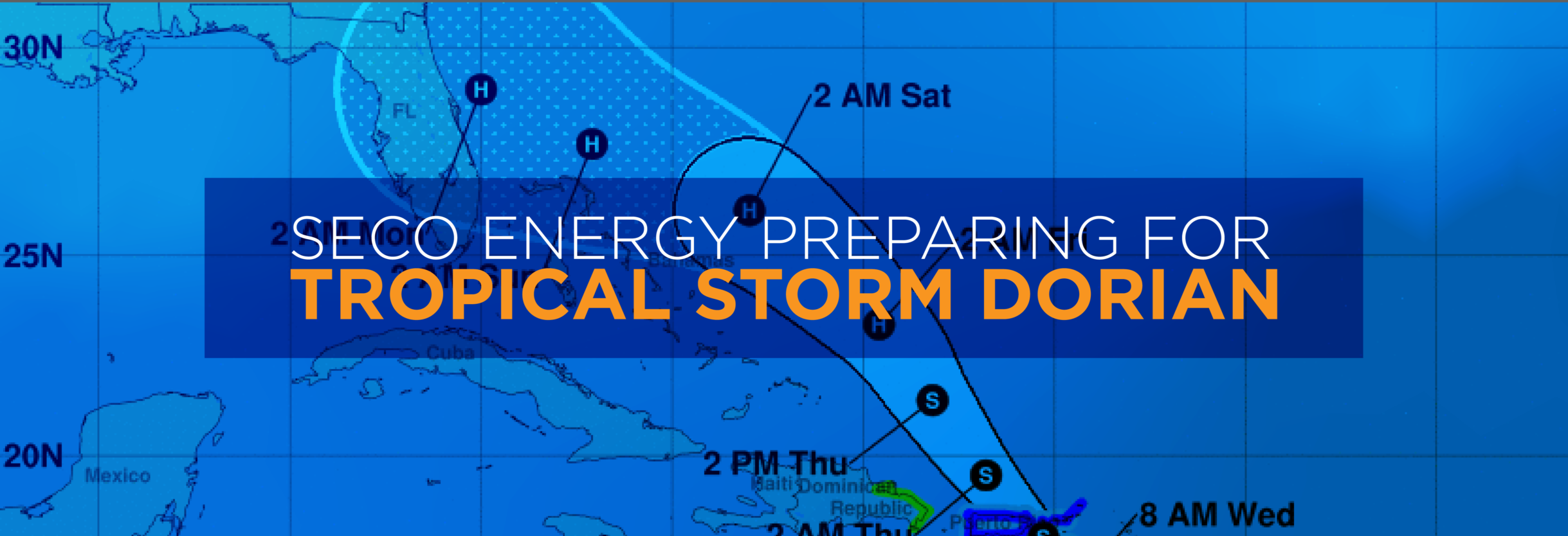SECO Energy Preparing for Tropical Storm Elsa
SECO Energy continues its preparations for Tropical Storm Elsa and the weather effects this storm will bring to its service area. Tropical Storm Elsa looks poised to make landfall at Cedar Key on Florida’s Gulf Coast sometime Tuesday evening.
The current forecast from the National Hurricane Center (NHC) shows Tropical Storm Elsa with maximum sustained winds up to 65 mph. The storm has stalled over western Cuba and has slowed to 14 mph as it moves northwest. Elsa’s tropical storm-force winds extend 75 miles from the center. There is still the potential for Tropical Storm Elsa to intensify as it moves past Cuba and into the Gulf of Mexico. The storm’s eventual landfall, final track and intensity continue to remain uncertain.
SECO members should be prepared for heavy rain from Tropical Storm Elsa beginning late Tuesday afternoon and lasting through Wednesday. The area along I-75 and west to the Gulf Coast will likely feel the most impact from Elsa. The wind speed is forecast to be sustained at 18 to 20 mph and wind gusts of 25 to 35 mph. The grounds are already heavily soaked after a rainy June. More rain could bring trees down and create extended power outages.
CEO Jim Duncan urges members to remain vigilant for Tropical Storm Elsa. He stated, “Tropical Storm Elsa has the potential to pick up speed, intensity and develop into a bigger storm. Don’t be caught off guard. Continue to follow the storm’s forecast, prepare your families, secure your homes and have your emergency supplies available and easily accessible. Members close to the west coast should be especially cautious.”
Duncan also reminded members that SECO Energy’s StormCenter outage reporting and communications platform offers outage alerts. “StormCenter is available for members to report outages using their smartphones or tablets 24 hours a day, 7 days a week. Members should also enroll in outage notifications and alerts via email, text, voice message, or all three. An alert is sent when the system recognizes that your service has been interrupted. The alert will include crew status and an estimated restoration time. You’ll also receive a notification when the service is restored that includes the cause of the outage if it is known at that time.”
Members should visit StormCenter and bookmark the site on their smartphones or tablets. At StormCenter, members can view the outage map, enroll or manage notifications, check the status of an existing outage, report an area light outage and more.
Stay up to date on weather affecting SECO Energy’s service area, the latest news releases and cooperative updates by liking SECO’s Facebook page and following @SECOEnergy on Twitter.



